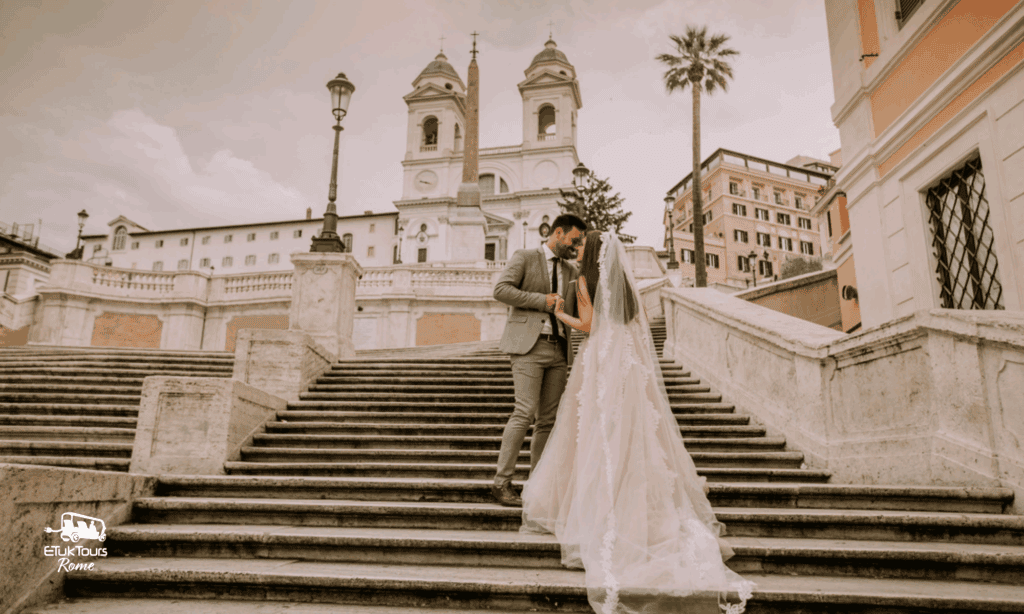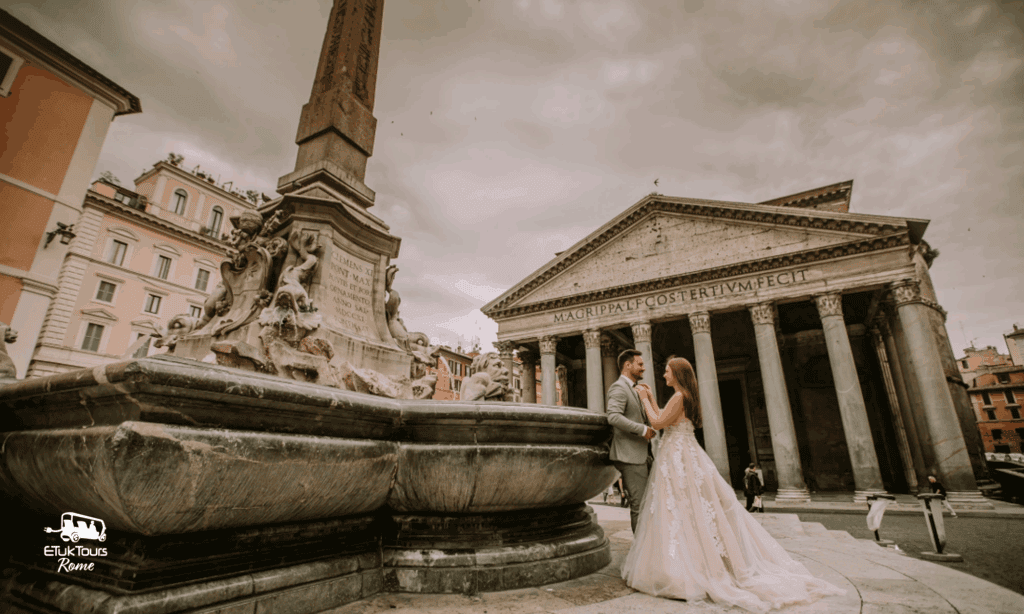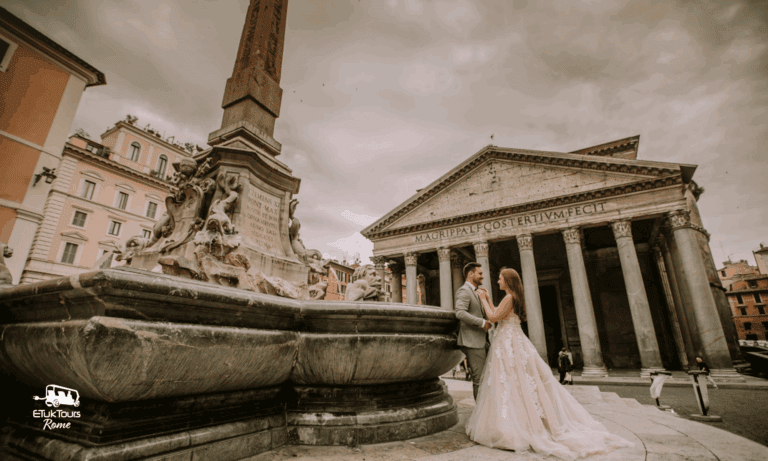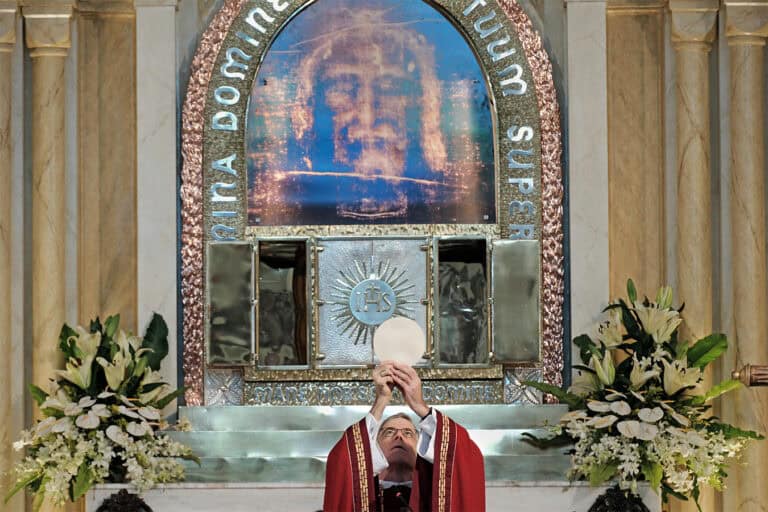Getting married in Rome is more than just an event; it’s an immersion into a story that has unfolded for millennia. The idea of exchanging vows in the Eternal City, with its sun-drenched cobblestone streets, ancient wonders, and the melody of its iconic fountains, is a dream for many. Yet, planning a destination wedding, especially in a foreign country like Italy, can feel daunting. The bureaucracy, the language barrier, and the sheer number of choices can quickly turn a dream into a source of stress.
This guide is designed to eliminate that stress. We will walk you through the entire process, from understanding the legal requirements to selecting your dream venue and assembling the perfect team. This is your comprehensive, step-by-step roadmap to a seamless and unforgettable Roman wedding. By breaking down each stage into manageable actions, we’ll transform complexity into clarity, allowing you to focus on what truly matters: celebrating your love in one of the most romantic cities on Earth.

The Dream Begins: Why Rome is Your Perfect Wedding Destination
Rome offers a wedding backdrop unlike any other. It’s a city where epic history and intimate romance coexist on every corner. Getting married here means your celebration becomes part of this timeless narrative, creating memories set against a canvas of unparalleled beauty and culture.
Embracing the Eternal City’s Romance and Ambiance
The allure of a Roman wedding lies in its atmosphere. Imagine your wedding photos with the Colosseum as a backdrop, a post-ceremony toast near the Trevi Fountain, or a reception in a villa overlooking the city’s terracotta rooftops. The city itself becomes a guest at your wedding, lending its grandeur and passion to your special day. The vibrant energy of the streets, the aroma of espresso from a corner café, and the golden light at sunset all contribute to a sensory experience that enriches your marriage celebration.
What Kind of Roman Wedding Suits You? (Civil, Religious, Symbolic, Elopement)

Choosing your ceremony type is the first major step. This chart breaks down the key differences between the main wedding options in Rome.
Before diving into logistics, decide on the type of ceremony that reflects your vision.
- Civil Ceremony: This is the legally binding marriage recognized by the Italian state. It must be performed by a civil registrar in a government-approved location.
- Religious Ceremony: A Catholic wedding is the only religious ceremony that can be legally binding without a separate civil service. Other faiths require a civil ceremony first.
- Symbolic Ceremony: Offering complete freedom of location (villas, gardens, private terraces), this ceremony is not legally binding. Couples often complete the legal paperwork in their home country or in a separate civil ceremony in Italy.
- Elopement: For ultimate intimacy, an elopement in Rome focuses purely on the couple, often combining a simple civil or symbolic ceremony with a romantic photoshoot around the city.
Best Times to Get Married in Rome (Spring, Summer, Fall, Winter Considerations)
Rome is beautiful year-round, but each season offers a different experience.
- Spring (April-June): Considered the best season. The weather is pleasant, flowers are in bloom, and the city is vibrant. It’s also peak season, so book venues and vendors well in advance.
- Summer (July-August): Hot and often crowded. While the long, sunny days are beautiful, consider an evening ceremony. Many Romans leave for vacation in August, which can affect vendor availability.
- Fall (September-October): Another ideal season. The weather is mild, the crowds thin, and the golden autumn light is stunning for photography.
- Winter (November-March): The off-season offers lower prices and fewer tourists. While cooler, the festive atmosphere around Christmas and the crisp, clear days can be incredibly romantic.
Step 1: Navigating the Legal Landscape for Your Roman Wedding
Understanding the legal framework is the most critical step for a stress-free planning process. Italy has specific laws and conditions for marriage, particularly for foreign nationals.
Understanding Italian Marriage Laws and Conditions
To get married in Italy, both parties must be at least 18 years old (or 16 with parental consent). You cannot be currently married to another person; if previously married, you must present a final divorce decree or a death certificate. The law also requires that women who are divorced or widowed wait 300 days before remarrying, though this can sometimes be waived with a medical certificate.
Civil Ceremony Requirements: The Foundation of Legal Marriage in Italy
A civil ceremony is the cornerstone of a legally recognized marriage in Italy. It is performed by the mayor or a designated civil registrar and requires the presence of two witnesses (one for each partner). The ceremony is conducted in Italian, so if one or both partners do not speak the language, an official interpreter is mandatory. These ceremonies must take place in venues officially licensed by the Comune (Town Hall).
Religious Ceremony Requirements: Adding Faith to Your Union
For a Catholic wedding, the requirements are more extensive. You will need to coordinate with your local parish priest at home and the parish priest of the church in Rome. Required documents typically include baptism and confirmation certificates, a letter of freedom to marry, and proof of attendance at a pre-cana course. A Catholic ceremony in Italy can simultaneously fulfill the civil marriage requirements if properly coordinated, creating a single, legally binding event.
Specific Guidance for U.S. Citizens Getting Married in Rome
U.S. citizens do not need to be residents of Italy to marry there. The process involves obtaining specific documents from the U.S. and presenting them to Italian authorities. This includes a U.S. passport, birth certificate, and evidence of termination of any previous marriages. The key document you will obtain in Italy is the Dichiarazione Giurata, which replaces the Nulla Osta for U.S. citizens.
Step 2: The Paperwork Puzzle – Your Step-by-Step Document Preparation Guide
Navigating the required documentation is often the most intimidating part of getting married abroad. A methodical approach makes it entirely manageable.
Gathering and Authenticating Your Initial Documents
Begin by collecting your core documents well in advance. For most non-Italians, this includes:
- A valid passport for each person.
- An original long-form birth certificate for each person.
- If applicable, a final divorce decree or a death certificate of the previous spouse. These documents form the basis for all subsequent paperwork required by the Italian government.
The Process of Obtaining Your “Dichiarazione Giurata” in Rome
For U.S. citizens, the Dichiarazione Giurata is a sworn statement made before a U.S. consular officer in Italy, affirming there are no legal impediments to your marriage according to U.S. law. You must book an appointment at the U.S. Embassy in Rome to obtain this. Once signed and stamped by the consul, it is a valid legal document for your wedding. Citizens of other countries must obtain a Nulla Osta from their respective embassies or consulates in Italy.
Legalizing Documents with the Apostille Stamp
To be recognized as valid in Italy, documents issued outside the European Union (like your birth certificate and divorce decree) must be legalized with an Apostille stamp. This is an international certification obtained from the Secretary of State in the state where the document was issued. The Apostille authenticates the signature and seal on your official documents, making them legally acceptable in Italy.
Submitting Documents to the Comune and Ufficiale dello Stato Civile
Once you have your authenticated documents and your Dichiarazione Giurata or Nulla Osta, they must be legalized at the local Prefettura office. After legalization, you will submit your complete document package to the marriage office (Ufficio Matrimoni) of the Comune where you plan to marry. The Ufficiale dello Stato Civile (civil registrar) will review them and schedule your Dichiarazione di Matrimonio (Declaration of Intent to Marry).
Working with a Professional Translator for Legal Documents
All documents not in Italian, such as your birth certificate or divorce decree, must be translated by a certified translator. The translation must then be sworn as accurate in an Italian court. This is a non-negotiable step. Hiring a professional service or a wedding planner who manages this ensures accuracy and prevents delays in the approval process.
Step 3: Choosing Your Dream Roman Wedding Venue

With the legal groundwork laid, the exciting part begins: selecting the perfect setting for your Roman wedding. The city offers a breathtaking array of venues to suit every style and ceremony type.
Iconic Civil Wedding Venues in Rome
For a legally binding civil ceremony, you must choose a venue approved by the Rome Municipality. The most famous is the Sala Rossa (Red Hall) at the Campidoglio, offering stunning views of the Roman Forum. Another popular choice is the Complesso Vignola Mattei, a former convent near the Baths of Caracalla, providing a more secluded and romantic setting for official events.
Enchanting Religious Wedding Venues
Rome, the heart of Catholicism, is home to countless beautiful churches. While a wedding in St. Peter’s Basilica within Vatican City is reserved for residents, several nearby churches, such as Sant’Anna dei Palafrenieri, welcome foreign couples. Throughout Rome, historic churches like Santa Maria in Trastevere or the Basilica of Santi Giovanni e Paolo al Celio offer majestic settings for a religious marriage.
Private Villas, Castles, and Unique Venues for Your Celebration
For your reception or a symbolic ceremony, the options are limitless. Luxurious villas on the Appian Way, historic castles in the Roman countryside, and elegant rooftop terraces with panoramic city views provide unforgettable settings. These private venues offer exclusivity and the flexibility to customize your celebration, from catering to decor. Booking one of these exclusive locations elevates your wedding events to another level.
Considerations for Venue Selection
When choosing your venue, consider guest capacity, accessibility, and the overall ambiance you wish to create. Think about the logistics between your ceremony and reception locations. Do you envision an intimate dinner, a grand ball, or a relaxed garden party? Your venue choice is central to bringing that vision to life.
Step 4: Assembling Your A-Team – Essential Vendors for a Stress-Free Day
The right team of vendors is crucial for a flawless destination wedding. They are your local experts, handling the details so you can enjoy every moment.
The Indispensable Role of a Rome Wedding Planner
For a destination wedding in Rome, a local wedding planner is not a luxury; it’s an essential investment in a stress-free experience. They navigate the bureaucracy, manage vendor contracts in Italian, and handle all logistical challenges. A good planner’s team understands the local culture and has established relationships with the best suppliers, ensuring quality and reliability.
Legal Translators and Interpreters for Official Procedures
As mentioned, a certified translator for your documents is mandatory. You will also need an official interpreter present at your Declaration of Intent and during the civil ceremony if you don’t speak fluent Italian. Your wedding planner can typically arrange this, ensuring all legal communication is clear and correctly executed.
Photographers and Videographers: Capturing Rome’s Magic
Choosing a photographer who understands Rome’s unique light and iconic locations is key. Review portfolios to find a style that matches your vision, whether it’s classic romance, candid photojournalism, or fine art photography. They will capture the ephemeral moments against timeless backdrops, from the Colosseum to the quiet, ivy-clad streets of Trastevere.
Catering and Dining Experiences
Italian cuisine is a highlight of any Roman wedding. Work with a caterer to design a menu that reflects the best of local flavors, from aperitivo hour with prosecco and antipasti to a multi-course sit-down dinner. For a truly luxurious experience, consider venues with Michelin-starred restaurants, such as Imàgo at the Hassler Hotel or Aroma at Palazzo Manfredi, for your reception or a pre-wedding dinner.
Other Key Vendors: Florists, Hair & Makeup Artists, Musicians
Complete your team with talented local professionals. A florist can create arrangements that complement your venue’s aesthetic. A skilled hair and makeup artist will ensure you look and feel your best. Finally, musicians—whether a classical string quartet for the ceremony or a lively band for the reception—will set the perfect mood for your celebration.
Step 5: Planning the Guest Experience and Logistics
A destination wedding is also a vacation for your guests. Ensuring they have a wonderful experience is part of the joy of getting married in Rome.
Guest Accommodation and Travel in Rome
Provide your guests with a list of recommended accommodations at various price points. Consider booking a block of rooms at a hotel for convenience. Offer information on the best ways to get from the airport to the city center and how to navigate Rome’s public transport or use taxis. A small welcome guide with local tips can be a thoughtful touch.
Welcome Events and Pre-Wedding Celebrations
Hosting a welcome event, such as a casual pizza and prosecco night or a cocktail reception on a rooftop bar, is a wonderful way to greet your guests and allow them to mingle. It sets a celebratory tone for the wedding weekend and shows your appreciation for them traveling to be part of your special events. This helps create a cohesive and enjoyable experience for everyone involved.
Conclusion
Getting married in Rome is an achievable dream. While the process involves careful planning and attention to legal detail, it is far from insurmountable. By following these steps—understanding your options, methodically preparing your documents, choosing the right venue, and assembling a professional team—you can eliminate the stress and embrace the excitement. The key is to start early, stay organized, and lean on the expertise of a local wedding planner. Your Roman wedding is not just a single day; it is a timeless story waiting to be written amidst the ancient streets and romantic vistas of the Eternal City. With this guide in hand, you are ready to begin your journey toward a beautiful, seamless, and truly unforgettable celebration of your marriage in Italy.








